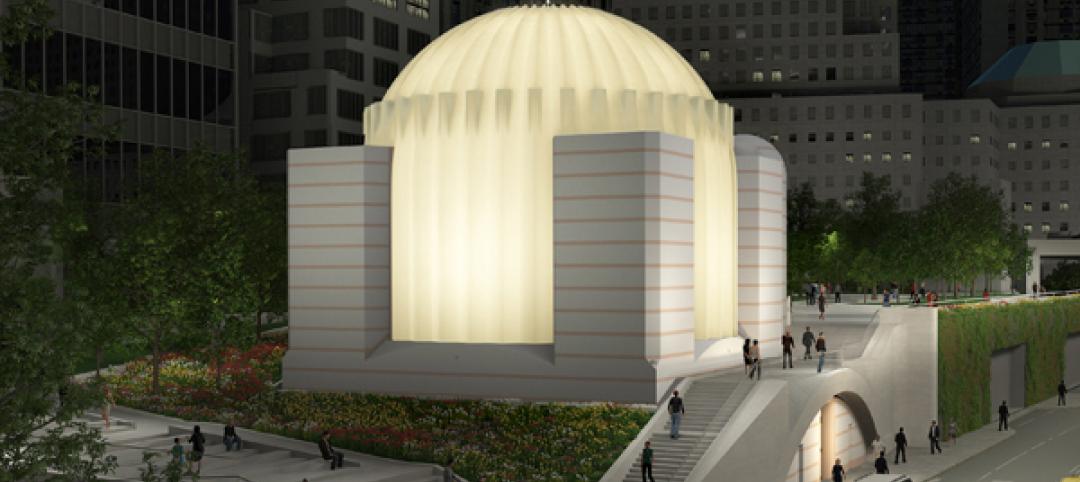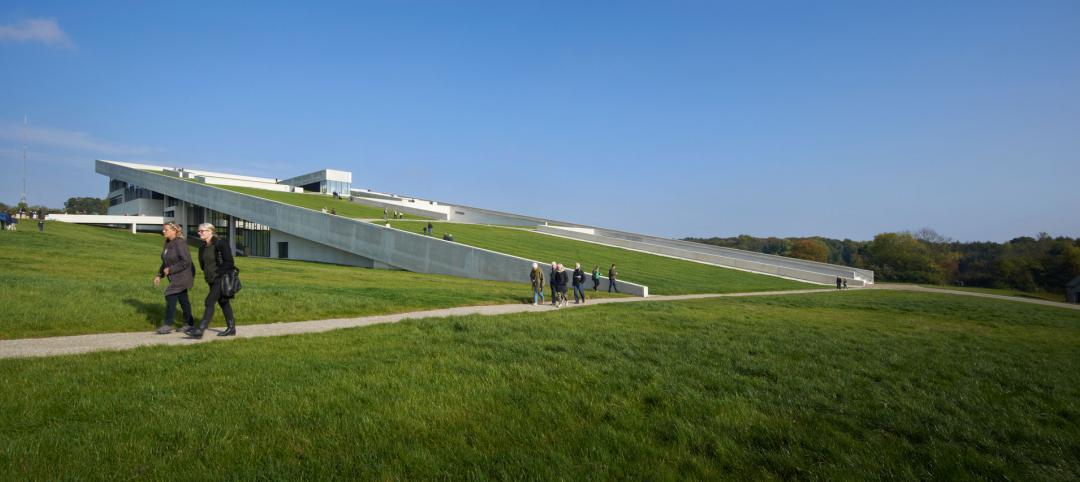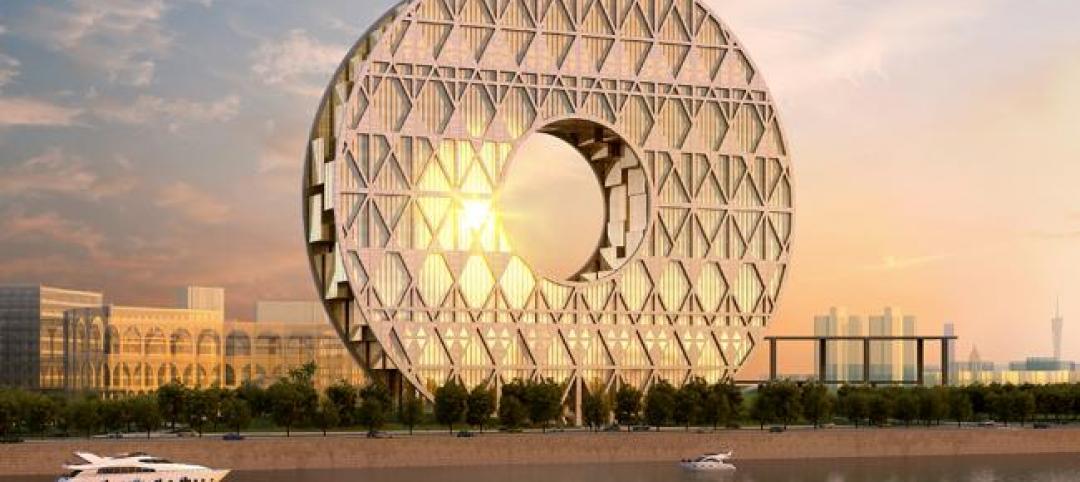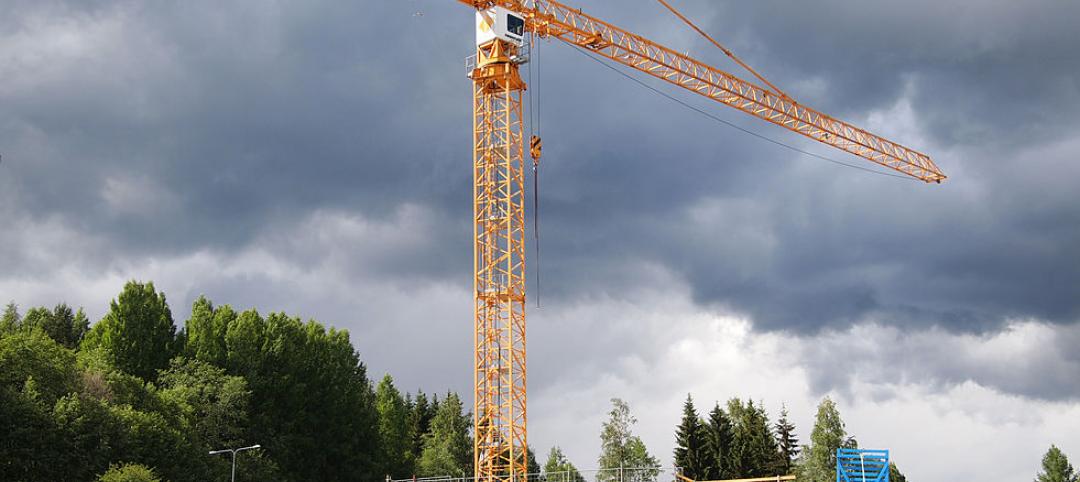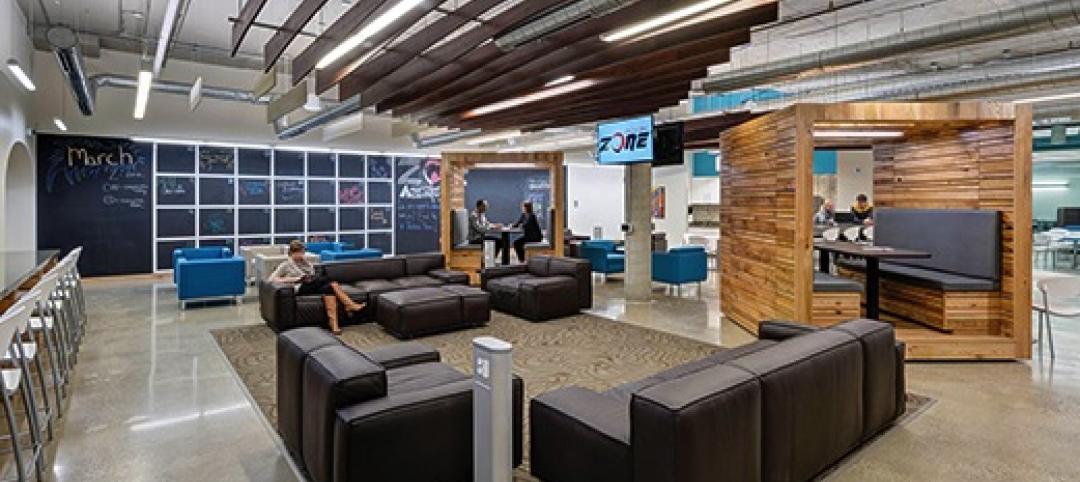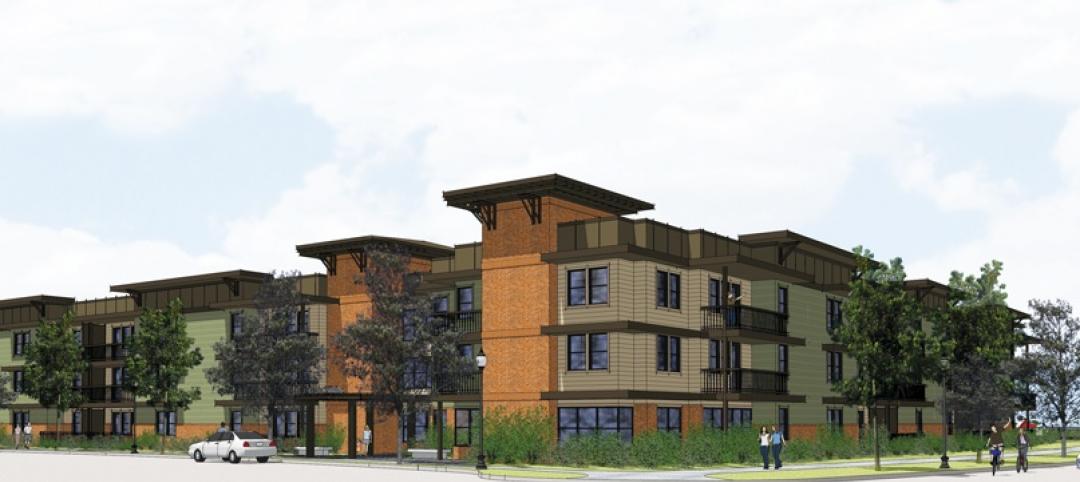Soaring to a height of 1,776 feet (540-meter), the 2.6-million-sf (242,000-square-meter) building soon to become the new One World Trade Center in the lower Manhattan district of New York City is a marvel of design and engineering. Construction of the building, previously dubbed the Freedom Tower, began in April 2006 and, when it is completed in 2013, it will be the tallest building in the U.S.
The building will feature an expansive public lobby, a series of mechanical floors, followed by 69 office floors that will include two television broadcast floors, mechanical floors and two restaurants. There will be an observation deck and parapet above these floors, and at the crown, a communications platform and a 408-foot (125-meter), cable-stayed antenna. Below-ground, concourses will offer 55,000-sf (5,100 square-meters) of retail space.
Sustainable design is central to One World Trade Center's development, integrating renewable energy, interior daylighting, reuse of rainwater and of recycled construction debris and materials. But one of the most sustainable elements of the structure is so integral to the mammoth skyscraper’s strength and durability that it might surprise you.
Concrete
The structural columns of One World Trade Center are comprised of steel and concrete. The compressive strength of concrete for these columns is divided into four phases starting at 14,000 psi (97 MPa) at the bottom of the building, and progressing through 12,000 psi (83 MPa), 10,000 psi (69 MPa) and 8,600 psi (59 MPa) to the top. The 12,000 psi (83 MPa) concrete phase of the project was extremely challenging, with the engineers, owners and contractors all having their own requirements and specifications.
Engineering requirements:
- Compressive strength: 12,000 psi (83 MPa) @ 56 days
- Over-design for safety: 1,900 psi (13 MPa)
- Modulus of elasticity: 7.0 million psi (48 GPa)
- Heat of hydration: Not to exceed 160 OF (70 OC)
- Non-air-entrained
Port Authority of New York/New Jersey:
- Quantity of portland cement in the mixture: Less than 400 lb/yd3 (240 kg/m3)
Contractor requirements:
- Slump flow: 22 – 26 inches (560 - 660 mm)
- Ability to pump to at least 40 floors
- No loss in concrete workability during transit and placement
- Aesthetically pleasing
To achieve the desired concrete properties, concrete producer Eastern Concrete Materials, Elmwood Park, N.J. and admixture supplier BASF Construction Chemicals, Beachwood, Ohio, partnered to develop a special high-strength, sustainable concrete mixture. This mixture was used for the 38,000 yd3 (29,000 m3) of concrete needed for the columns through the first 40 floors.
One of the biggest challenges in developing this concrete mixture was meeting the Port Authority of New York/New Jersey’s strict requirement for the replacement of cement. Through BASF’s Green Sense Concrete mixture optimization service, Eastern Concrete Materials was able to proportion a concrete mixture that met this requirement and allowed for the use of high levels of recycled materials. The mixture substantially replaced portland cement with the recycled materials, as well as silica fume, non-cementitious fillers and Glenium high-range water-reducing admixtures to exceed all the performance targets specified by the One World Trade Center project stakeholders.
To determine the environmental impact, an Eco-Efficiency Analysis of the concrete mixture was conducted, using a methodology validated by NSF International, to compare the specialized Green Sense Concrete mixture to a reference mixture. The results of this cradle-to-gate analyses included fresh water savings of 30,492 gallons (115,400 liters), energy savings of over 8 million kWh, air emissions savings of 12 million lb (5445 tonnes) of CO2, solid emissions savings of over 400,000 lb (180 tonnes) and fossil fuel savings of 750,000 lb (340 tonnes).
“We are extremely proud to be part of this historic and iconic project,” said John Salvatore, Head of BASF Construction Chemicals Americas. “But we are especially proud of the collaboration and innovation that was brought to bear in order to make a significant contribution to the enhanced sustainability of One World Trade Center.”
For more on innovative admixtures, click here to visit BASF Admixture Systems. +
Related Stories
| Oct 23, 2014
Santiago Calatrava-designed church breaks ground in Lower Manhattan
Saturday marked the public "ground blessing" ceremony for the Saint Nicholas National Shrine, the Greek Orthodox Church destroyed on 9/11 by the collapse of the World Trade Center towers.
| Oct 23, 2014
Prehistory museum's slanted roof mimics archaeological excavation [slideshow]
Mimicking the unearthing of archaeological sites, Henning Larsen Architects' recently opened Moesgaard Museum in Denmark has a planted roof that slopes upward out of the landscape.
| Oct 23, 2014
China's 'weird' buildings: President Xi Jinping wants no more of them
During a literary symposium in Beijing, Chinese President Xi Jinping urged architects, authors, actors, and other artists to produce work with "artistic and moral value."
| Oct 23, 2014
Architecture Billings Index shows strong demand for institutional, mixed-practice design
AIA reported the September ABI score was 55.2, up from a mark of 53.0 in August. This score reflects an increase in design activity.
| Oct 22, 2014
Customization is the key in tomorrow's workplace
The importance of mobility, flexibility, and sustainability in the world of corporate design are already well-established. A newer trend that’s gaining deserved attention is customizability, and how it will look in the coming years, writes GS&P's Leith Oatman.
| Oct 21, 2014
Passive House concept gains momentum in apartment design
Passive House, an ultra-efficient building standard that originated in Germany, has been used for single-family homes since its inception in 1990. Only recently has the concept made its way into the U.S. commercial buildings market.
| Oct 21, 2014
Hartford Hospital plans $150 million expansion for Bone and Joint Institute
The bright-white structures will feature a curvilinear form, mimicking bones and ligament.
| Oct 21, 2014
Norman Foster, Zaha Hadid release plans for resorts in Nanjing and Wuhan, China
Jumeirah Group, a hotel group forming a part of investment group Dubai Holding, has chosen Zaha Hadid and Norman Foster to design two of three of its proposed resorts in Nanjing, Wuhan, and Haikou.
| Oct 21, 2014
Inside LEED v4: The view from the MEP engineering seats
Much of the spirited discussion around LEED v4 has been centered on the Materials & Resources Credit. At least one voice in the wilderness is shouting for greater attention to another huge change in LEED: the shift to ASHRAE 90.1-2010 as the new reference standard for Energy & Atmosphere prerequisites and credits.
| Oct 21, 2014
Perkins Eastman white paper explores state of the senior living industry in the Carolinas
Among the experts interviewed for the white paper, there was a general consensus that the model for continuing-care retirement communities is changing, driven by both the changing consumers and more prevalent global interest on the effects of aging.


